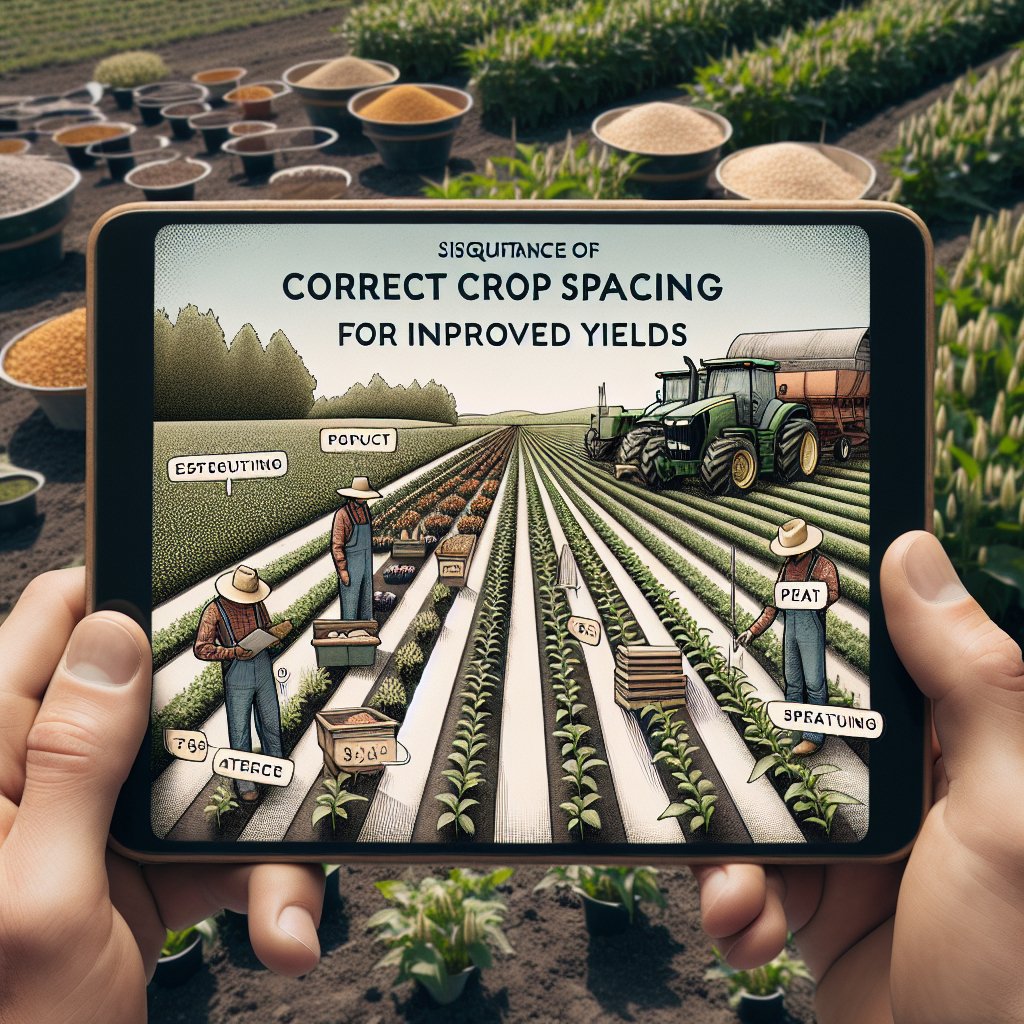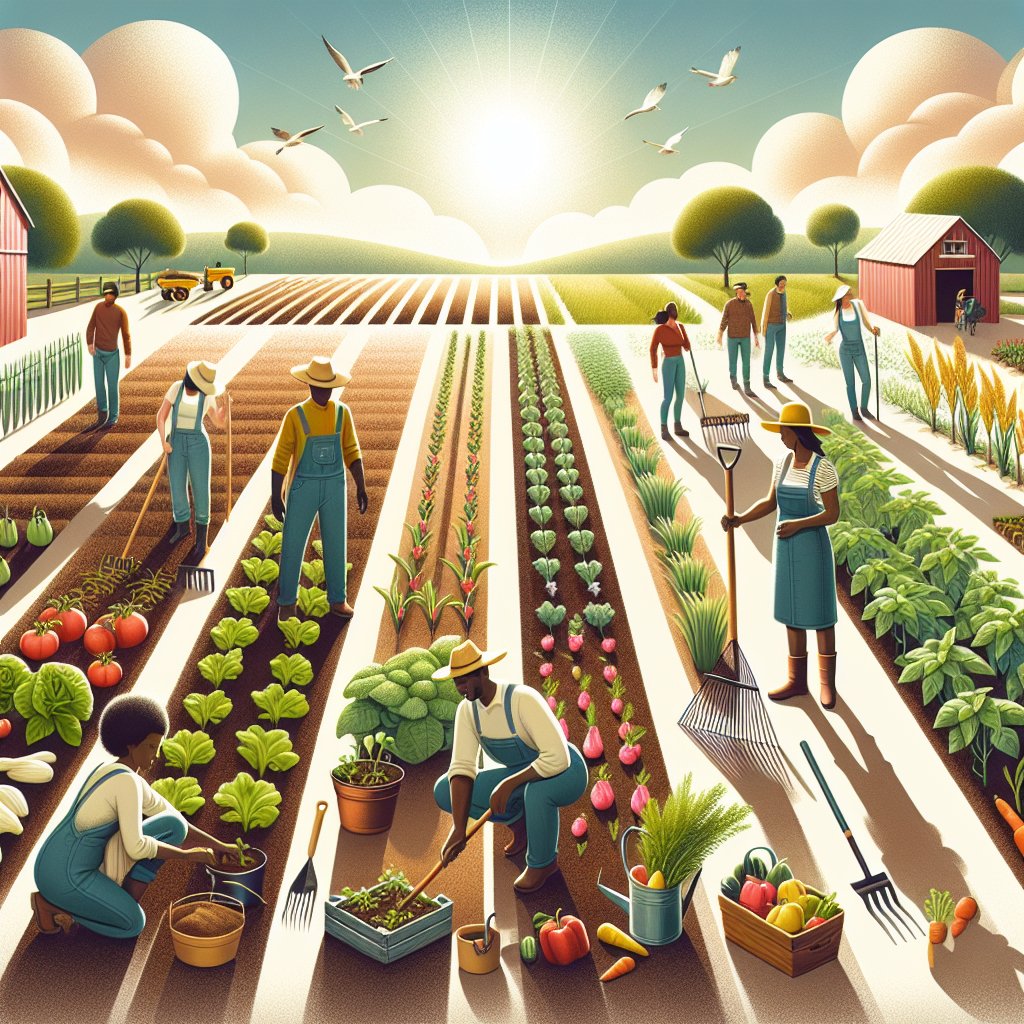
Proper crop spacing is a critical factor in achieving better yields in agriculture. It involves the strategic arrangement of plants in a field to optimize their growth and productivity. This practice not only influences the health and development of the crops but also impacts the overall efficiency of the farming operation. In this article, we will explore the significance of proper crop spacing and how it contributes to enhanced agricultural yields.
Understanding Crop Spacing
Crop spacing refers to the distance between plants within a row and the distance between rows in a field. The optimal spacing varies depending on the type of crop, soil conditions, climate, and farming practices. Proper spacing ensures that each plant has adequate access to sunlight, nutrients, and water, which are essential for healthy growth.
One of the primary benefits of proper crop spacing is the reduction of competition among plants. When plants are too close together, they compete for limited resources, which can lead to stunted growth and lower yields. By providing each plant with enough space, farmers can ensure that they receive the necessary resources to thrive.
Additionally, proper spacing can help prevent the spread of diseases and pests. When plants are crowded, it creates a humid environment that is conducive to the growth of pathogens. Adequate spacing allows for better air circulation, reducing the risk of disease outbreaks. It also makes it easier to monitor and manage pest populations, as there is more room to apply treatments and inspect plants.
Factors Influencing Crop Spacing
Several factors influence the determination of optimal crop spacing. These include the type of crop, soil fertility, climate conditions, and the intended use of the crop. For instance, root crops like carrots and beets require more space between plants to allow for root expansion, while leafy greens like lettuce can be planted closer together.
Soil fertility also plays a crucial role in determining spacing. In nutrient-rich soils, plants can be spaced closer together because they have access to ample nutrients. Conversely, in poorer soils, wider spacing may be necessary to ensure that each plant receives enough nutrients to grow.
Climate conditions, such as temperature and rainfall, also affect spacing decisions. In regions with high rainfall, wider spacing may be needed to prevent waterlogging and ensure proper drainage. In contrast, in arid regions, closer spacing might be beneficial to reduce evaporation and conserve soil moisture.
The intended use of the crop can also influence spacing. For example, crops grown for fresh market sales may require different spacing than those grown for processing or storage. Farmers must consider the end use of the crop when planning their spacing strategy.
Techniques for Implementing Proper Crop Spacing
There are several techniques that farmers can use to implement proper crop spacing. One common method is the use of planting guides or templates, which provide a visual reference for spacing plants accurately. These guides can be made from materials like wood or metal and are placed on the ground to mark planting spots.
Another technique is the use of precision planting equipment, which can be calibrated to plant seeds at specific intervals. This technology ensures consistent spacing and can be particularly useful for large-scale operations. Precision planting equipment can also be adjusted to accommodate different crop types and field conditions.
Farmers can also use crop rotation and intercropping strategies to optimize spacing. Crop rotation involves changing the type of crop grown in a particular field each season, which can help improve soil health and reduce pest and disease pressure. Intercropping, on the other hand, involves planting different crops together in the same field, which can enhance biodiversity and resource use efficiency.
Benefits of Proper Crop Spacing
The benefits of proper crop spacing extend beyond increased yields. By optimizing plant arrangement, farmers can improve the overall health and resilience of their crops. Proper spacing can lead to stronger root systems, better nutrient uptake, and increased resistance to environmental stressors.
Moreover, proper spacing can enhance the efficiency of farm operations. With well-spaced plants, farmers can more easily access and manage their crops, reducing labor costs and improving the effectiveness of pest and disease control measures. This can lead to higher quality produce and increased profitability for the farm.
In addition, proper crop spacing can contribute to sustainable farming practices. By reducing competition and improving resource use efficiency, farmers can minimize the need for chemical inputs like fertilizers and pesticides. This can lead to healthier soils and ecosystems, supporting long-term agricultural productivity.
Challenges and Considerations
While the benefits of proper crop spacing are clear, there are challenges and considerations that farmers must address. One challenge is the variability in optimal spacing requirements for different crops and conditions. Farmers must be knowledgeable about the specific needs of their crops and be willing to adjust their practices as needed.
Another consideration is the cost and availability of precision planting equipment. While this technology can greatly improve spacing accuracy, it may not be accessible to all farmers, particularly those in developing regions. In such cases, farmers may need to rely on traditional methods and manual labor to achieve proper spacing.
Finally, farmers must consider the potential impact of climate change on crop spacing. As weather patterns shift and become more unpredictable, farmers may need to adapt their spacing strategies to accommodate changing conditions. This may involve experimenting with different spacing configurations and monitoring their effects on crop performance.
Conclusion
Proper crop spacing is a vital component of successful agricultural practices. By ensuring that each plant has access to the resources it needs to grow, farmers can achieve better yields and improve the overall health of their crops. While there are challenges to implementing proper spacing, the benefits are significant and can contribute to more sustainable and profitable farming operations. As the agricultural industry continues to evolve, the importance of proper crop spacing will remain a key factor in achieving food security and environmental sustainability.

